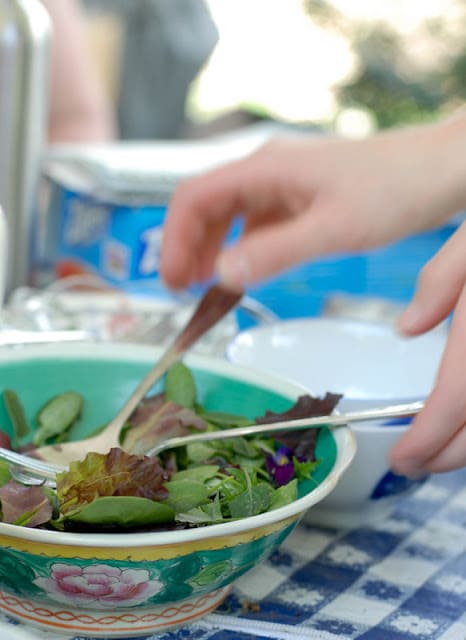
STOP! Put down the weed killer and back away. That could be your next meal you are spraying!
I’m fascinated with foraging. Perhaps the romantic notion of going out into the wild to emerge with exotic varieties of seasonal plants to whip up a fabulous meal. But underneath that beats the heart of a scardey cat. I can’t shake one of the final scenes in the movie ‘Into the Wild’ where the lost soul, idealistic main character exhibits the symptoms of eating misidentified plants. It was a gruesome visual to say the least. When learning recently about an Urban Foraging (finding food in the city) workshop offered through FeedDenver, I signed up immediately.
When embarking this past weekend, I really had no idea what to expect. We met up at a Denver coffee shop to start off. The adventure was lead by Kate Armstrong, a horticulturist (among many other traits) committed to urban food foraging and sustainability instruction. They do not come cooler than Kate. An ageless confessed Grandmother of 9, Kate is one of those vibrant spirits who has lived large and transcends all boundaries of age, gender, and socio-economics to be relatable to all. She has a strong commitment to community and permaculture (not even realizing what it was, though already a life master of it in practice.*)
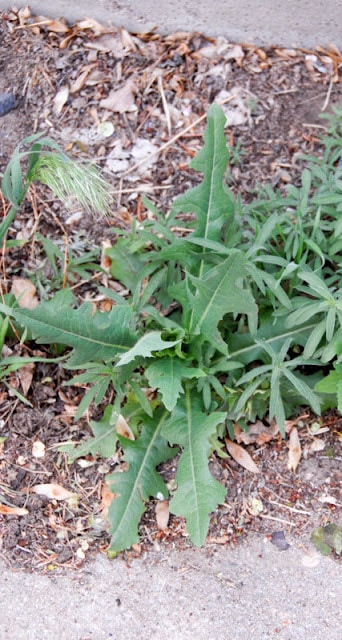
Prickly Lettuce
From the coffee shop we struck out through a back alley, immediately coming upon rogue plants rooting the cracks between asphalt, looking like my garden weeding To Do list. We had arrived at Prickly Lettuce, very similar in look to Dandelion though bearing barbed mini prongs on the main underside leaf providing a subtle nuance for newcomers to differentiate the two. There was Lamb’s Quarter (how many of these have I pulled and tossed in a lifetime of gardening?), Mustard (seeds can be used as a replacement for pepper or to make actual mustard) and Mallow. Kate pointed out Poplar and Aspen trees saying they are in the family of Willow and bearing pain relieving properties were one in a compromised situation in the wild. One has to admire the tenacity of these plants for the unlikely areas where they’ll emerge and thrive in this urban corridor.
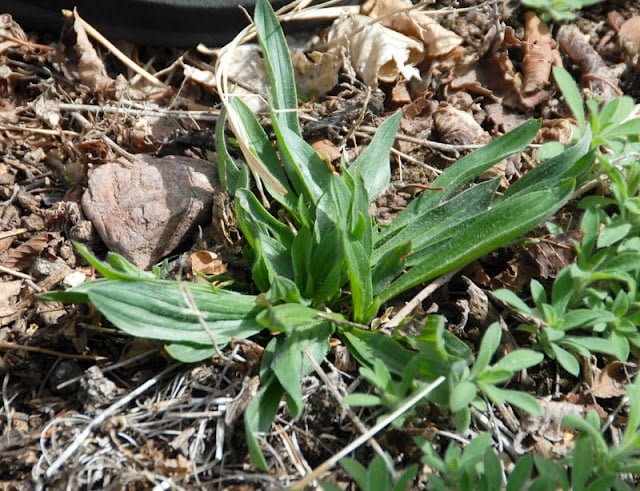
Did you know that Dandelion was brought over deliberately on the Mayflower for its panacea affect on many ailments? That you can batter and fry the flowers? That the leaves are best eaten when small and that emerging sprouts bear the nutrition of the full plant (and with Dandelion when it’s larger it turns bitter and medicinal so is handled differently)? Of course not. Who does know this.
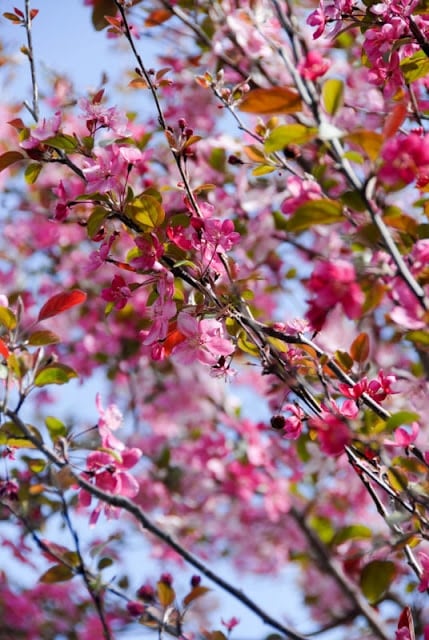
We walked through Berkeley Park looking at the various fruiting trees which sadly go unharvested in the summer (perhaps not after our class). We saw the Juneberry (guess what month the berries show up?) which smells like dead fish (you’d never guess it from the frilly while flowers) and produces a mealy, white centered berry like a blueberry which makes beautiful jam. Interspersed with this was weed identification and actual picking to make a salad for our lunch.
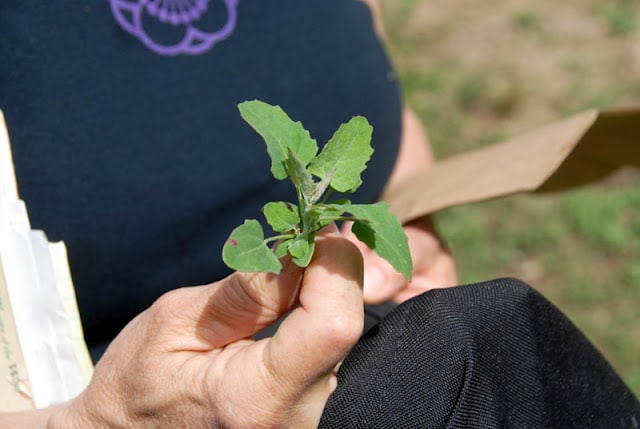
Kate commented on how when people only ate at as locavores (in the ‘olden days’ before globalization of food), after months of root vegetables and wrinkly apples, the nubile emerging weeds were not only welcome but physically chock full of nutrients and detoxifying. Having been one existing on over wintered food I could totally relate, celebrating anything green by April.
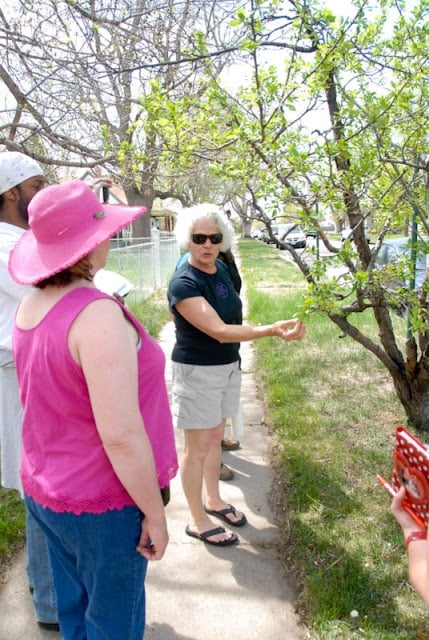
This seems a good juncture to begin to answer the questions I suspect might be running through your minds. NO you should not just run out into your yard and begin eating. You do need guidance on identification before embarking, in my opinion. Kate would tell you there are few plants that are poisonous but those which are, are deadly basically. You should never forage around roadways or areas which might potentially be sprayed. Avoid areas where animals roam, domestic or wild. There are a number of great books to help identify and others discussing edibility. Remember what you might consider edible is different than medicinal and you must know what you are doing. Find someone experienced to guide and teach you. Kate was expert at educating us and asking us to show her the species we spoke about to ensure we got the message correctly.
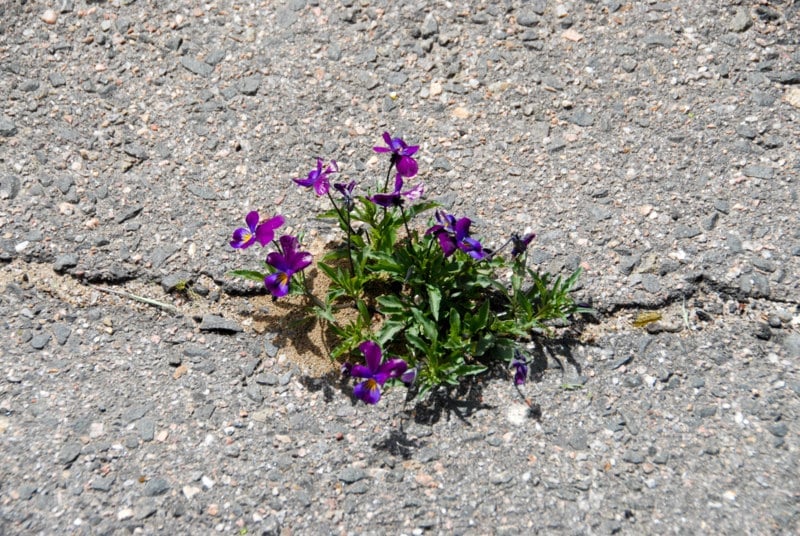
Violas, along with Pansies, Violets and Nasturtiums are all edible flowers perfect for a salad. Kate’s Rule of Thumb is ‘if there are 10 of something you can take a few; don’t ever totally deplete the plant’.
After the park, we returned to Kate’s home in the charming Berkeley neighborhood to drop our stuff and take off for a walk around looking at more species. This neighborhood had been an agricultural area as witnessed by the old fruiting trees in the neighborhood. Kate shared some plums turned prunes by her drying from a beautiful tree in her front yard. As we walked she reminded us to be mindful of the intake of wild plants as their potency is stronger than our bodies may be used to. ‘Eat a small amount and watch how your body responds’, she suggests. Good advice for any food intake frankly.
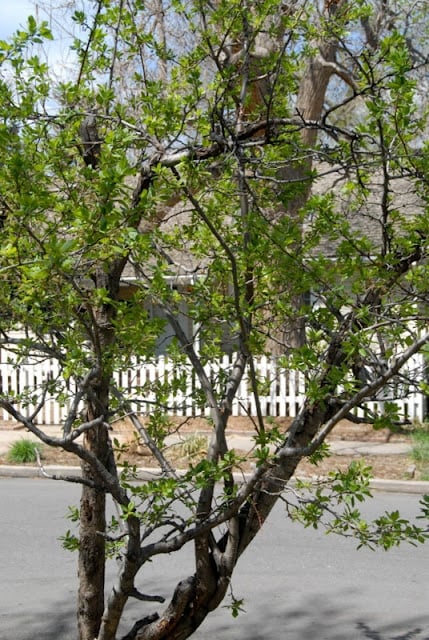
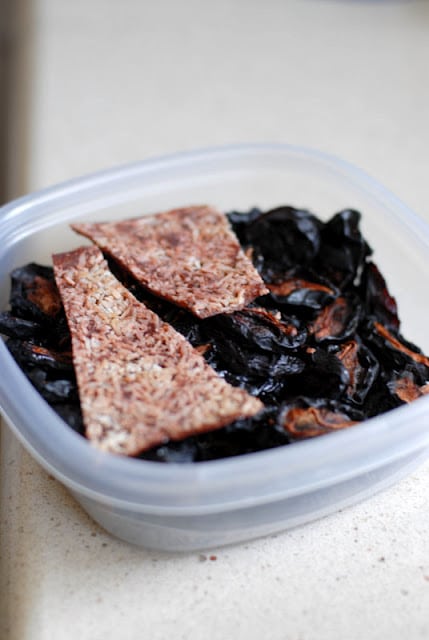
We returned to spend a perfect part of the afternoon on her shaded back patio. Kate swiftly compiled our little salad made from lamb’s quarter, dandelion, plantain (a weed so coveted by Kate she grows it from seed herself), bind weed and violas from our walk. Along with our foraged finds, Kate added oregano, and chives from her own garden and some extra greens. I did not know what to expect taste-wise. After my first bite I took a self note to be sure to cancel my landscaper’s planned spring weeding trip, not willing to miss a potential backyard bite at home.
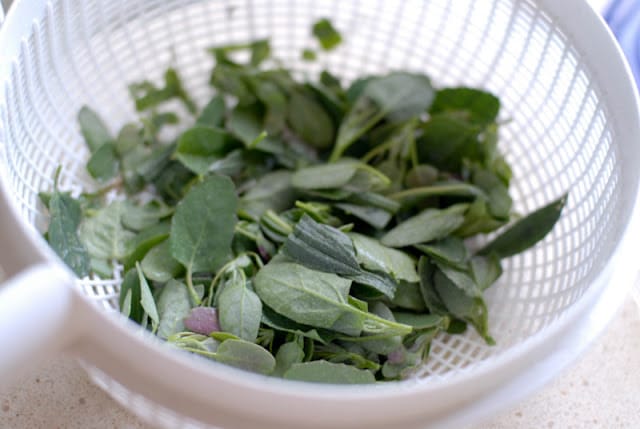
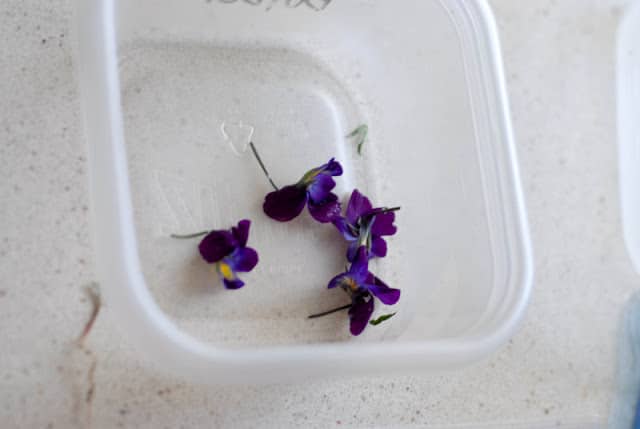
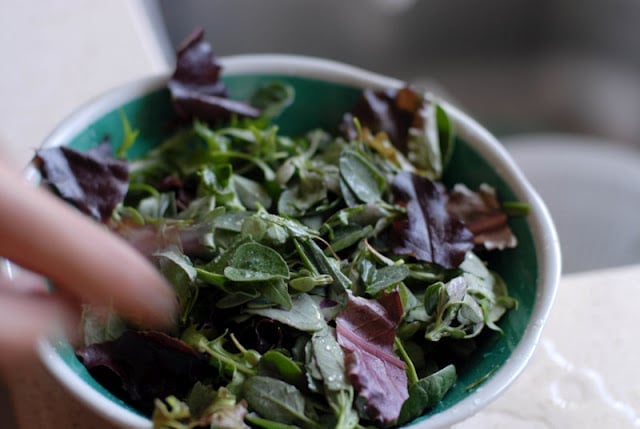
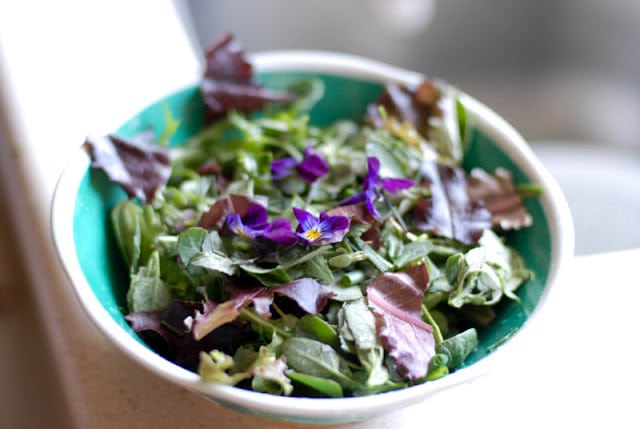
Having lived and traveled the globe, Kate shared with me while we were in her kitchen, that she has two degrees in Psychology and Counseling as well as a degree in English, and what she’s employing in her life now is all things she learned on the farm from her upbringing. Her manner of fitting in with anything or anyone hints at a Bohemian spirit surely influenced by a mother who spent a year in Paris in the 1930’s, taking classes at the Sorbonne and cooking classes at Le Cordon Bleu. When her family moved to the farm of Kate’s youth, she enjoyed the agricultural spoils of the land coupled with a mother-chef trained at arguably the finest cooking school in world. I think I might be uber cool too were I to have started that way.
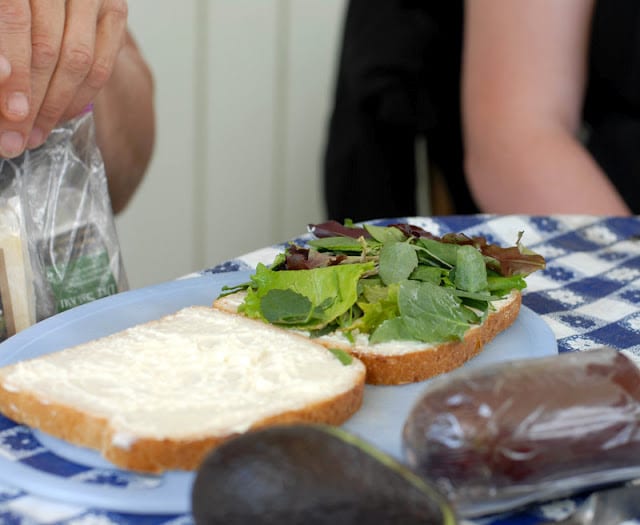
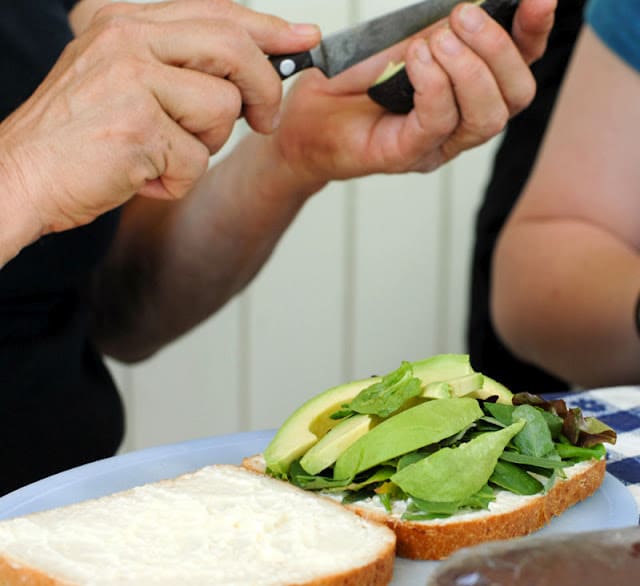
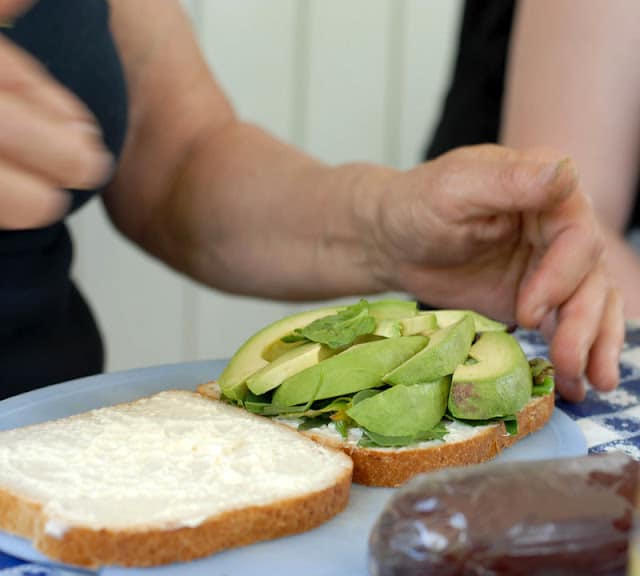
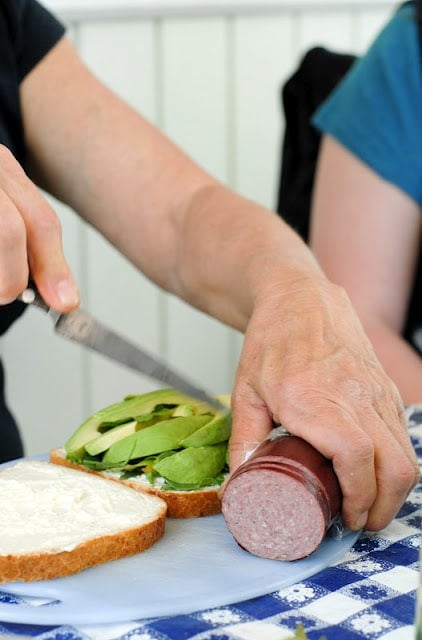
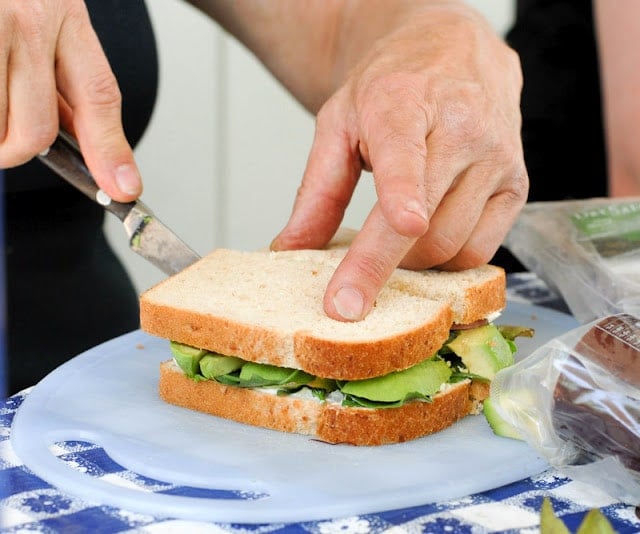
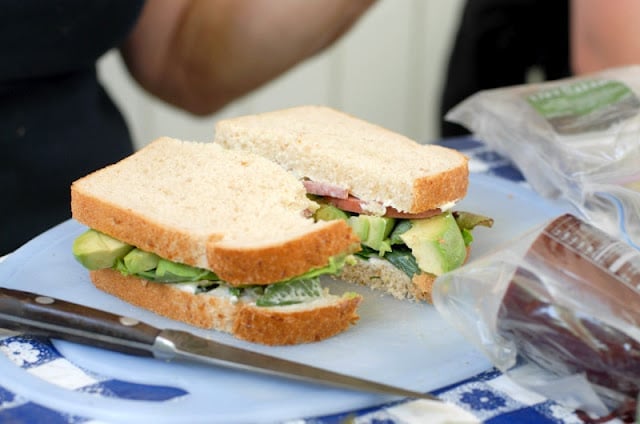
Would you have guessed a passel of weeds could be the basis of a sandwich this delicious looking?
We wiled away a few hours, eating and talking easily as though we’d known each other for much longer than a morning. We discussed food saving practices of canning, root cellaring, freezing, fermenting, and gleaning the fields after the traditional harvest for food. We sampled some of Kate’s coveted Juneberry jam. We were united in feeling Kate needs her own PBS program or at the least a YouTube instructional series. We will reconvene in a month to seek out Purslane and Sorrel which has not yet bloomed. I departed full of information and new budding friendships, a camaraderie committed to sustainable living and clean food, to sharing practices and skills with each other.
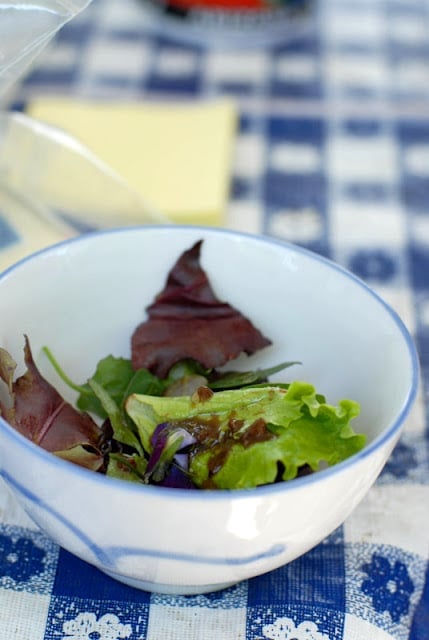
* A concise definition for ‘permaculture’ is hard to nail down. It is a concept pertaining to living in balance with nature, in a sustainable manner with regard to food and environment.
For more cool classes with Kate and other local permaculture experts, check out this link for Feed Denver: Urban Farms & Markets.
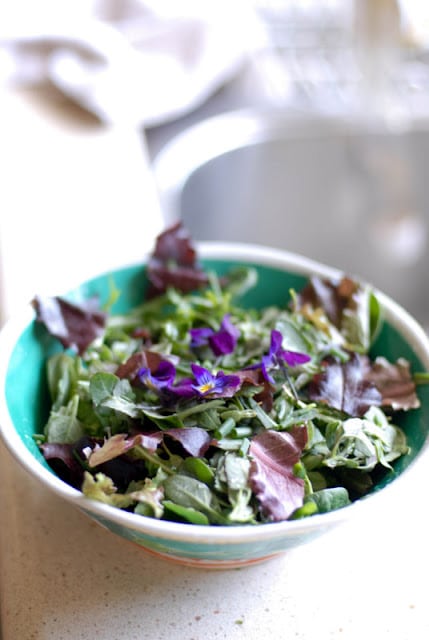
Holly Henry says
Wow, what an informative post. I love to garden myself and really enjoy using what I plant in my food. It makes the experience so much more enjoyable. I had no idea however that my yard has more to offer. Thank you for sharing. You have a great blog and I am now an official follower 🙂
I look forward to learning more from you!
Jen at The Three Little Piglets says
My mom always knew stuff like that too – it always amazed me. I agree with Chris – it's kind of a dying art form. Especially in areas that are more densely populated. A shame really…
Cooking with Michele says
OMG – who would have known that the pesky “weed” I pull literally almost daily from my vegetable garden is lamb's quarter and is edible?!?!?!? I guess I don't need to really wait for my other vegetables to mature to start enjoying my garden! BTW I think Denver Botanic Gardens offers an urban foraging class also…
My Kitchen in the Rockies says
No more doggies in the back yard, so we can all enjoy fresh and unfertilized weets, right? I ate my very first dandelion salad when I was about 13 at a friends house in Germany (picked fresh from the back yard). At this time I thought it was a very strange thing to eat.
Very interesting post, Toni. I am sure it was very fascinating to learn what Karen had to share. Thanks. Stay warm!
Lea Ann says
I agree with Karen, fascinating. The only things I've ever really foraged were mulberries off a tree down the road..and wild sand hill plums. I always thought I'd poison myself trying anything else.